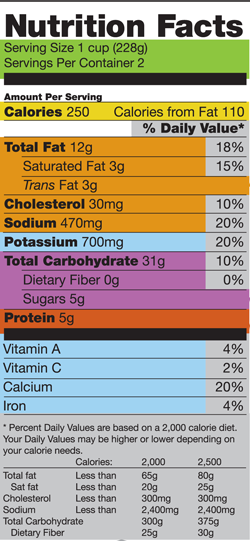Next Generation Nutrition Facts Label: What to Add or Ax?
 A recent Washington Post op-ed, FDA Should Revamp Nutrition Labels, by Michael Jacobson, PhD, and executive director of the Center for Science in the Public Interest, got me thinking about what I would add or ax from the next generation Nutrition Facts label. Yes, rumor has it we may eventually see a next generation Nutrition Facts label. Jacobson’s op-ed indicated sometime in 2013 as did a well written HuffPost Food blog, but I’m not holding my breath!
A recent Washington Post op-ed, FDA Should Revamp Nutrition Labels, by Michael Jacobson, PhD, and executive director of the Center for Science in the Public Interest, got me thinking about what I would add or ax from the next generation Nutrition Facts label. Yes, rumor has it we may eventually see a next generation Nutrition Facts label. Jacobson’s op-ed indicated sometime in 2013 as did a well written HuffPost Food blog, but I’m not holding my breath!
It does looks like we will soon, (ah, a relative term when speaking about government regulations), see more Nutrition Facts for standard menu items in restaurants and retail food establishments, thanks due to the Affordable Care Act (aka Obamacare). Any additional Nutrition Facts are welcomed!
Our current Nutrition Facts label came into being due to the 1990 Nutrition Labeling and Education Act and began appearing on packaged foods around 1994.
California, 1st to State Nutrition Facts on Restaurant Menus
On Sept 30 California’s governor signed the first state-wide legislation to require chain restaurants with more than 20 locations to offer up key nutrition facts, such as calories, saturated fat, carbohydrate and sodium, at the point of purchase (right next to the price of the item on menus or menu boards). No longer will the availability of this information on websites, on posters or in brochures be sufficient. The legislation goes into effect July 2009 and takes full effect in 2011.
When it Comes to Restaurants’ Nutrition Facts, Buyer Beware?
A recent report from a Scripps Television station investigation reveals wide discrepancies between the restaurant’s nutrition facts (calories and fat) and those determined by laboratory nutrition analysis. The investigation took place over 3 months, in 8 cities and on meals mainly from sit down restaurants, such as Chili’s, Applebee’s, and Cheesecake Factory ; and one fast food restaurant, Taco Bell. Some discrepancies were several fold, even on healthier entries. Others were more on target.

